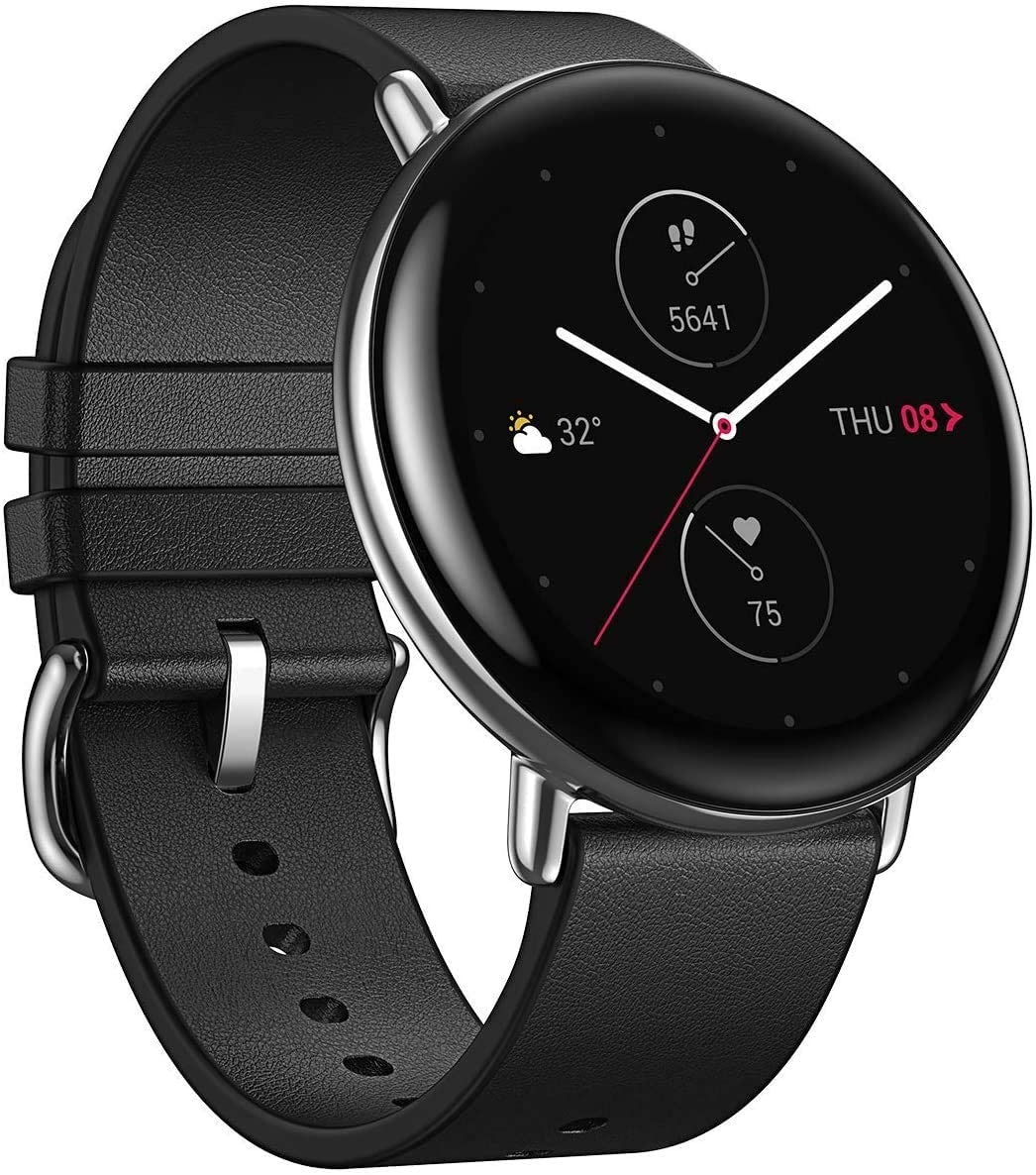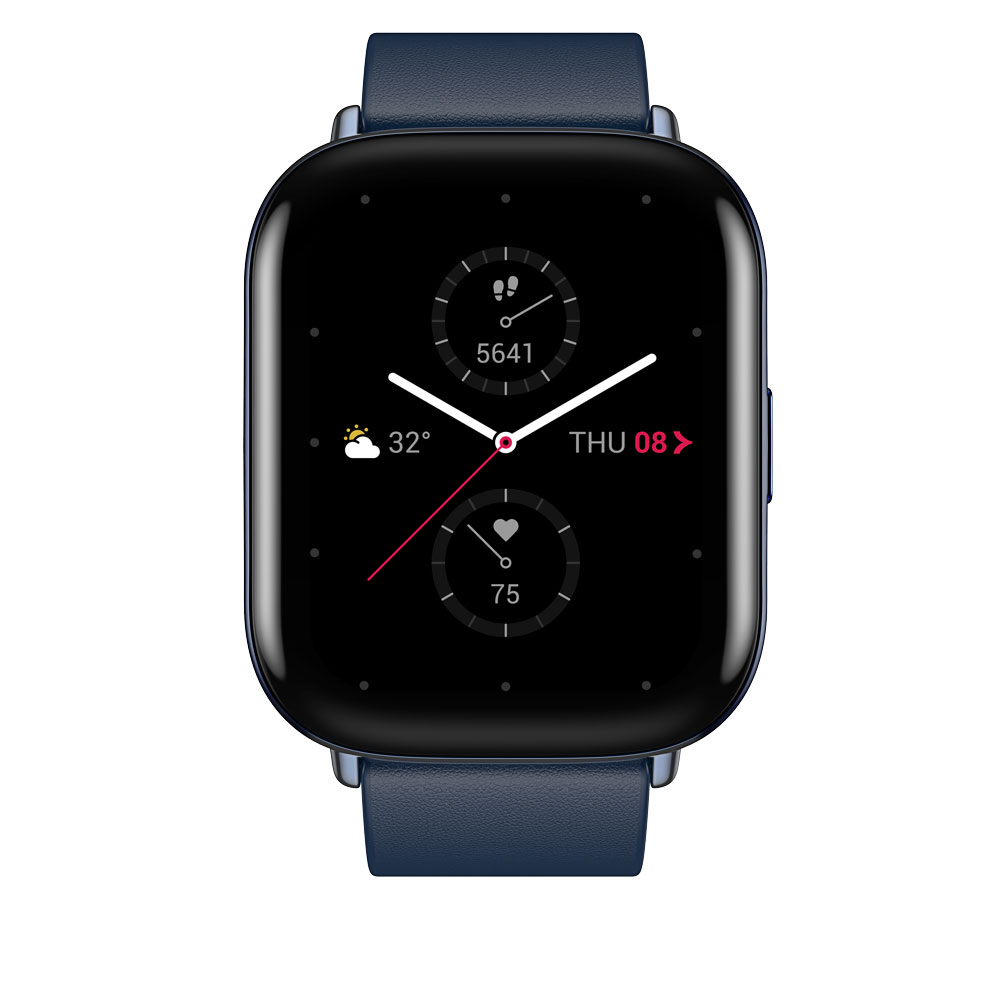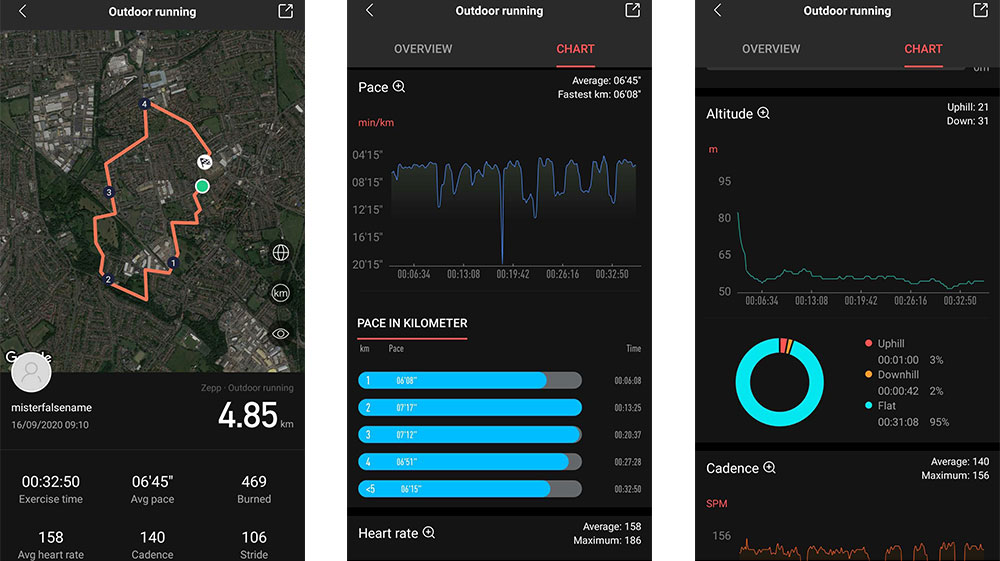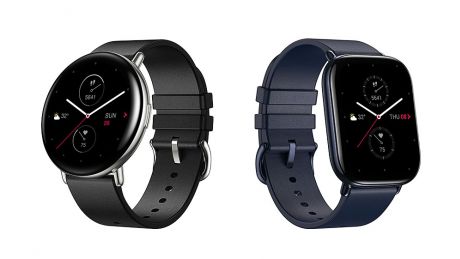Our Verdict
An attractive fitness watch with a great design and excellent battery life brought down by lack of onboard GPS.
For
- Stylish design
- Bright, vibrant screen
- Impressive battery life
- Choice of round or square face
Against
- No built-in GPS
- Display is sometimes fiddly
- No third-party apps on the device
- Expensive compared with rivals
You can trust Coach
The Zepp E has a lot going for it. Both square and round models look good, with a fabulously bright screen and a battery life that puts most wearables to shame. However, it remains difficult to wholeheartedly recommend it, partly because of the extremely streamlined and app-less operating system Zepp has built (although people who desire more simplicity in their lives may find this advantageous), but mainly because of the lack of built-in GPS, a now standard feature on wearables around the £200 mark. Not only is connected GPS less accurate, but you can kiss goodbye to running or cycling without your phone – and that’s hard to forgive in a wearable that goes for north of £200. It earns its four stars, but only just.

Zepp E Circle - Smartwatch Polar Night Black
Buy from Zepp | £209
See related
Zepp E In-Depth
The name Zepp might ring a bell with you. The company made wearables in the mid-2010s that were aimed at golfers, footballers and baseball players – an intriguing niche at a time when smartwatches were chiefly interested in running and cycling. But this device is firmly in the mode of mainstream sporty smartwatches. In 2018 Zepp was bought by Chinese wearable company Huami, the owner of Amazfit, which sells a range of cheap wearables like the good value Bip.
The Zepp E is a more upmarket proposition. Priced at a not unreasonable £209, the watch gets off to a great start by letting buyers decide whether they favour a rounded face, akin to the Garmin Venu, or a squared-off face like the Apple Watch. I reviewed the latter, and there’s little denying that it’s a great-looking timepiece, even if it’s clearly influenced by the work of former Apple chief designer Jony Ive.
The Zepp E’s Design

On the square Zepp E I received, the 1.65in (42mm) AMOLED display covers the front of the watch, with a gently curved bezel which connects the glass to a stainless steel back. Zepp describes the glass as bezel-less, which is a slight exaggeration: swiping colourful menus across shows a definite black rim , but it does a pretty good job of hiding this since the majority of the menus are black.
The finer points of the bezel aside, it’s a great screen. A sharp 348x442 resolution gives it 341 pixels per inch – slightly more than the iPhone 11’s 326ppi, for comparison’s sake. It’s more than enough here, and Zepp manages to outdo many rivals by including an optional always-on display, where the watch face is displayed in a (slightly dimmed) fashion at all times. Obviously this has an effect on battery life, but it’s there if you want it.
The strap mine came with – a sporty black Fluoroelastomer band – isn’t the most comfortable, though Zepp does get bonus points for including two different lengths in the box. Other options are available, and pleasingly the 20mm spring bar mechanism means you should be able to drop anything you like in its place.
The Zepp E is a fine-looking smartwatch, and someone would have to get uncomfortably close to your wrist to know you’re not wearing an Apple Watch. The rounded version looks even classier to my eyes (though I haven’t actually seen one in the flesh at the time of writing), so I’d say this is a wearable that can pass anywhere.
Smart Features On The Zepp E
Rather than embracing Google’s Wear OS, the Zepp E uses its own bespoke operating system. It’s not named, but it feels suitably different from the two different operating systems used on the Amazfit Verge and Verge Lite for me to suspect it marks a departure.
While the Amazfit Verge was based on Wear OS to some level, there’s no sign that this has any Google DNA at all. There’s no app store, so the limited functionality it comes with is all you’re ever getting, unless the company decides to send some more via an update.
It’s also Bluetooth only, without the ability to connect to Wi-Fi, so it’s very much a second screen for your phone rather than being a standalone device. In other words, it’s grand for basic notifications (eg email headings, but no contents) and knowing whether you need to check your phone, but there’s no Google Maps and you can’t install Spotify.
If that’s not a deal breaker for you, then generally speaking it’s a breath of fresh air to use a watch that’s quite so streamlined, without app stores or unnecessary extras. But it’s not perfect. The tiny icons that appear if you swipe the screen downwards, for example, are neither clearly labelled nor easy to press. The number of times I’ve been trying to enable “Theatre mode” (when the screen doesn’t switch on when it detects motion) and accidentally pressed the “lost phone” function is close to double figures. And given said function forces your phone to play a nerve-jangling screech, those aren’t ideal buttons to get mixed up.
Tracking Activity With The Zepp E
Fortunately, it’s not excessively streamlined when it comes to fitness functionality, which is clearly at the heart of the device by design. The Zepp E not only has the ability to track a number of indoor and outdoor workouts (running, trail running, cycling, swimming, elliptical, skiing, climbing and free training), but it will also give you an oxygen saturation (SpO2) reading on demand.
Swiping to the left brings up “Activity Goal” – a set of circles that bears more than a passing resemblance to the Apple Watch’s fitness rings. In short, you want to complete all the circles – steps, fat-burning time and standing times – each day to ensure a moderate level of activity. These equate to 8,000 steps, 30 minutes of slightly elevated heart rate and standing up 12 times. It’s a little basic, but for most people, it’s a nice way of seeing if you’re being too sedentary.
A swipe to the right brings up your PAI score – it stands for Personal Activity Intelligence. The methodology is pretty opaque, but the watch explains it uses heart rate data, how much intense physical activity you do and a “multi-dimensional comprehensive evaluation of physiological data” to give you a simple number. If you keep it above 100, you’re likely to live longer, and less likely to die of cardiovascular disease, according to the HUNT Fitness study from the Norwegian University of Science and Technology’s medical school.
Obviously it’s hard to vouch for the algorithm’s veracity based on short-term use, but it does seem to behave as you’d expect. Exercise more and your PAI number goes up. We know that improved fitness lowers your resting heart rate, so it’s not inconceivable that the PAI number could be a useful proxy for general health – and given it’s an easy-to-understand number, it’s good that the Zepp E places it so prominently.
Running With The Zepp E
This focus on health and fitness makes the Zepp E’s first real misstep all the more baffling. There’s no onboard GPS, so the watch uses your phone for location tracking. This not only means that you can’t go running without your handset, but that you’re at the mercy of your smartphone’s (often flaky) GPS sensor, and any aggressive battery-saving tech that may prevent it giving a realistic measurement.
That said, on my Samsung Galaxy S10e, the measurement given to the Zepp E was only a little off the pace. Over three runs between 4km and 5km in length, the Zepp E was, at worst, 0.25km behind the usually spot-on Garmin Forerunner 245 on my other wrist. Of the other two runs, one was just 0.15km different and the third was exactly the same. So it’s not foolproof, but if you’re confident of your phone’s distance-tracking abilities, it’s not the worst offender for accuracy.
While I couldn’t find a way to change the data on the screen during runs, the defaults are almost exactly what I’d ask for anyway: duration, distance, pace and heart rate. You can scroll down to get more data, or swipe left to access a remote control for audio to play on your phone during your workout too.
More importantly, once you’re done with your run, the Zepp app offers all the post-match analysis you could ask for. Pace, heart rate, altitude, cadence and stride length are all plotted out in neat graphs, with averages and bests clearly labelled, and there’s even a neat pie chart showing you what percentage of your run was uphill, downhill or flat. And if you’re rolling your eyes at the thought of having to consult yet another app, you’ll be pleased to hear that the software can be connected directly to Strava and/or Google Fit.

Sleep Tracking With The Zepp E
You might be forgiven for thinking that the Zepp E doesn’t track sleep – there’s no mention of it anywhere on the watch itself – but in the background it’s quietly tracking your downtime and diligently saving the data to the Zepp app.
Deep, light and REM sleep are all plotted into a graph, as long as you’re asleep for longer than 20 minutes, and this data is available over days, weeks, months or years so you can see how things are changing over time.
When you check in on the app, it will inform you whether your sleep was better or worse than normal, and highlight any fixes it sees along the way (eg advising you to get an earlier night if it detects a late one). It will also tell you how your sleep compares with that of other people – for example, on one glorious night, I achieved more deep sleep than 72% of other people. All of this is tallied up into an overall sleep score out of 100.
Overall, it’s decent, but it’s not clear how valuable the data is. You get the feeling that Zepp is also wrestling with that question, given it doesn’t even bother highlighting the numbers on the watch itself.
Battery Life On The Zepp E
Amazfit watches seem to have some kind of magic dust when it comes to battery life. While the Apple Watch still can’t make it through a day, Amazfit specialises in wearables that go the distance and then some. The Bip could go for a massive 45 days with the core of its functionality intact, and while the Zepp E’s 188mAh battery isn’t as impressive as that, it’s still far superior to almost every other wearable.
This isn’t the kind of watch that needs charging after every workout. In general, I was able to get just over a week’s wear before needing to charge, even though the need for constant communication with your phone’s GPS during runs should take its toll. Enabling the always-on display does knock this a little, but even then you’re looking at a good five or six days’ heavy usage in my experience. If that’s still not enough for you, there’s a battery saving mode that will just display the time while recording your steps and sleep duration. In this mode, you’ll get over the two weeks’ usage without a charge.
There are two minus marks for the battery, and the first one is more of a side effect of how impressive it is. The Zepp E uses a bespoke magnetic charger that you clip the watch on to. The problem here is that it’s very easy to forget to take it with you when regular charging isn’t something that’s hardwired into your brain. That makes the Zepp E a bit of a victim of its own success.
The second is that the Zepp E isn’t very good at warning you when it’s running low on juice. Yes, there’s a notification buzz telling you to charge soon, but I managed to completely miss this the first time it occurred, and I only noticed when I looked at my watch only to find it completely powered down. You can access the battery percentage at any time by swiping down on the screen, but as mentioned earlier, it’s a bit fiddly.
Should You Buy Something Else?
The Zepp E is an attractive wearable at a not unattractive price of £209, but the lack of built-in GPS is an obvious achilles heel. For £10 less the Fitbit Versa 3 offers built-in location tracking, and Versa 2 offers similar functionality to the Zepp E with the added slickness of Fitbit’s system and integration with Amazon’s Alexa voice assistant. The Versa 2 is reduced to £170 at third-party retailers and it’s also expected to see significant discounts in the run-up to Christmas.
Alternatively, the just-released Garmin Venu Sq is £180 (£229 with music storage) and promises excellent sports tracking in a square frame, while Garmin’s GPS-toting Vivoactive 3 is now a steal at around £150, and offers a great deal of extra value. It may not look quite as nice, but for those that value accurate run analytics above all else, it’s an easy way to save £60.
Alan is a freelance tech journalist and mostly covers fitness trackers for Coach.
Alan was not what you would call a big fitness guy growing up, but has been radicalised by parkrun and taken up running in a big way. Although nowhere near podium at races, as a late starter he does at least know that he can still get faster. Alan has written for ShortList, Tom’s Guide, Trusted Reviews and Expert Reviews, among others.


